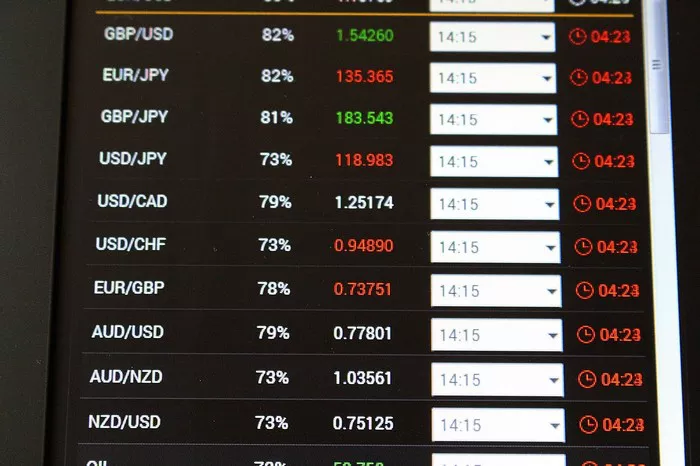The Australian dollar (AUD) is one of the most traded currencies in the world. Its value fluctuates due to various economic, political, and market-specific factors. Understanding these factors is crucial for investors, traders, and policymakers. This article delves into the primary elements that influence the price of the Australian dollar.
1. Commodity Prices
Impact of Commodity Exports
Australia is a major exporter of commodities such as iron ore, coal, gold, and natural gas. These exports significantly influence the country’s economic health and, consequently, the value of the Australian dollar. When commodity prices rise, the AUD tends to strengthen because higher prices increase export revenues, boosting the national economy.
Global Demand for Commodities
Global demand for these commodities also affects the AUD. For instance, increased demand from China, one of Australia’s largest trading partners, can lead to a higher AUD. Conversely, a slowdown in global economic growth can reduce demand for commodities, weakening the AUD.
2. Interest Rates
Reserve Bank of Australia’s Policies
The Reserve Bank of Australia (RBA) sets the country’s interest rates. Higher interest rates offer better returns on investments denominated in AUD, attracting foreign capital. This influx of investment strengthens the AUD. Conversely, lower interest rates make the AUD less attractive, leading to a depreciation.
Interest Rate Differentials
Interest rate differentials between Australia and other major economies also play a role. If Australian interest rates are higher relative to other countries, the AUD will likely appreciate as investors seek higher returns. Conversely, if Australian rates are lower, the AUD might weaken.
See Also: 7 Points to Tell You How Many Lots Are in Foreign Exchange
3. Economic Indicators
GDP Growth
Gross Domestic Product (GDP) growth is a key indicator of economic health. Strong GDP growth signals a robust economy, which can lead to a stronger AUD. Investors view higher growth rates as a sign of stability and potential for returns.
Employment Data
Employment figures, such as the unemployment rate and job creation numbers, impact the AUD. Lower unemployment rates and higher job creation suggest a strong economy, leading to a stronger AUD. Conversely, higher unemployment can weaken the currency.
Inflation Rates
Inflation affects purchasing power and interest rates. Moderate inflation is typically seen as positive, indicating a growing economy. However, high inflation can erode purchasing power and lead to higher interest rates, which can either strengthen or weaken the AUD depending on the context.
4. Trade Balance
Export and Import Levels
The trade balance, the difference between a country’s exports and imports, directly impacts the AUD. A trade surplus (more exports than imports) strengthens the AUD because it indicates higher demand for Australian goods and services. A trade deficit (more imports than exports) can weaken the currency.
Trade Relationships
Trade relationships with key partners, especially China, significantly influence the AUD. Strong trade relations and agreements can boost exports, strengthening the AUD. Conversely, trade tensions or barriers can harm exports and weaken the currency.
5. Political Stability and Government Policies
Political Environment
Political stability is crucial for economic confidence. Stable governments are associated with predictable economic policies, which attract foreign investment. Political instability, on the other hand, can deter investment and weaken the AUD.
Fiscal Policies
Government fiscal policies, including taxation and public spending, impact economic growth and the AUD. Expansionary fiscal policies (increased spending and lower taxes) can stimulate growth and strengthen the AUD. Conversely, contractionary policies can slow growth and weaken the currency.
6. Market Sentiment and Speculation
Investor Confidence
Market sentiment, driven by investor confidence, plays a significant role in currency valuation. Positive sentiment towards Australia’s economic prospects can lead to a stronger AUD. Conversely, negative sentiment can weaken the currency.
Speculative Trading
Speculative trading in the forex market can cause short-term fluctuations in the AUD. Traders’ perceptions of future economic conditions, interest rates, and geopolitical events can lead to rapid buying or selling of the currency, impacting its value.
7. Global Economic Conditions
Economic Performance of Major Economies
The economic performance of major economies, especially the United States, China, and the Eurozone, affects the AUD. Strong growth in these economies can boost global demand for commodities, positively impacting the AUD. Conversely, economic downturns in these regions can reduce demand and weaken the AUD.
Global Financial Crises
Global financial crises, such as the 2008 financial meltdown or the COVID-19 pandemic, can lead to risk aversion among investors. During such times, investors often flock to safe-haven currencies like the US dollar, causing the AUD to weaken.
8. Exchange Rates and Currency Pairs
USD/AUD Pair
The USD/AUD currency pair is one of the most traded pairs. Movements in the US dollar impact the AUD significantly. A strong US dollar often leads to a weaker AUD and vice versa. Factors affecting the US dollar, such as US economic data, Federal Reserve policies, and geopolitical events, therefore, indirectly affect the AUD.
Cross-Currency Pairs
Other currency pairs, such as the EUR/AUD and GBP/AUD, also impact the AUD. Changes in these currencies’ values, driven by their respective economic conditions and central bank policies, can influence the AUD’s strength or weakness.
Conclusion
The price of the Australian dollar is influenced by a complex interplay of factors. Commodity prices, interest rates, economic indicators, trade balances, political stability, market sentiment, global economic conditions, and exchange rates all play critical roles. Understanding these elements helps investors and traders make informed decisions in the forex market. As with any currency, the value of the AUD is dynamic and subject to constant change, reflecting the ever-evolving nature of global economics and politics.
Related topics:


























